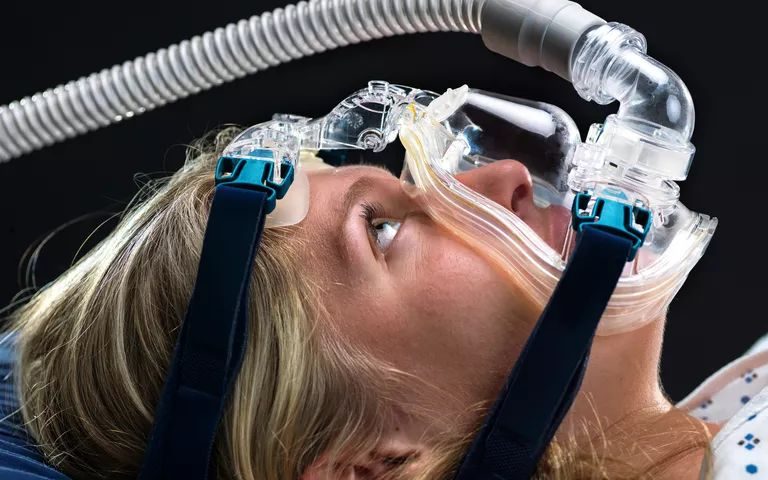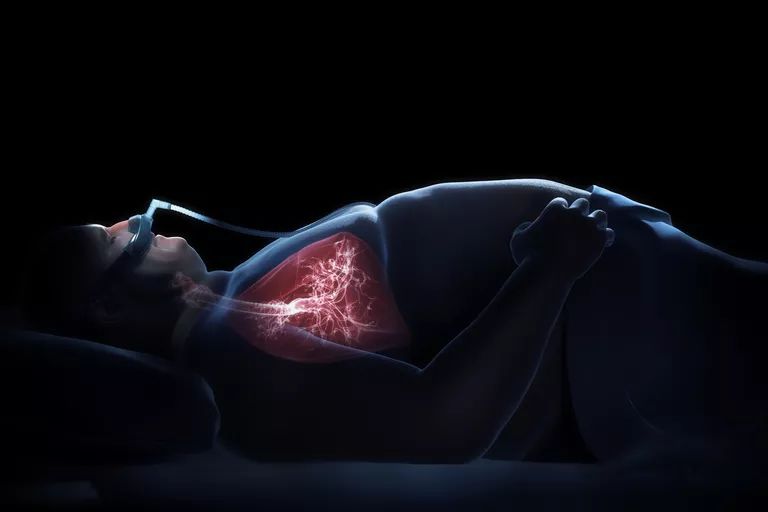Things, I might have missed – Part 2

Things, I might have missed – Part 1
July 14, 2019Gestational Diabetes & Management Tips
March 25, 2022SLEEP Disorders (Sleep Apnea)
Living with CPAP
Inpart 1, we have understood and got some basic knowledge on a very common sleep disorder, called Sleep Apnea. We met our friend Varun who was diagnosed for this disorder. Varun was asked by his doctor to start using CPAP machine. He also suggested for some lifestyle modification. Thankfully, Varun is now much happy with his CPAP, as it is assisting him to have a sound sleep. Most of his symptoms are now subsided. He doesn’t feel sleepy throughout the day any more. Lilly, his wife, doesn’t complain about his loud snore any more. His blood sugar is now reduced to normal range along with the Blood Pressure. Most importantly, Varun got his sparkling energy back. His performance in office also improved, which gone for a toss before couple of months.Living with CPAP
Though sleep apnea may not be avoidable in most circumstances, the good news is that there remains an effective treatment: continuous positive airway pressure (CPAP). This constant flow of air keeps the airway open and prevents its collapse. Like our friend Varun, it can be highly effective for those who can tolerate it.Are there any side effects I will experience from using a CPAP machine?
Most patients will encounter side-effects from the CPAP machine at some point in their experience with it.
Air Leaking from CPAP Masks
An air leak is the most common complaint associated with CPAP use. If the mask does not fit perfectly, air may escape around the edges, especially as you change position while you are sleeping. Larger masks, such as those that cover the nose and mouth, are more prone to leaks. Leaks may compromise your therapy by reducing the pressure delivered, or they may be noisy and disturb your bed partner.
Use proper mask that fits you the best. Get help from our specialist technicians.
Skin Marks or Rashes from CPAP
Your CPAP mask may leave marks on your skin if it doesn't fit properly, possibly leading to sores or even ulcers, especially along the bridge of your nose. People with sensitive skin may also develop a rash or skin irritation, especially with masks that contain latex. Mask liners, barrier creams, loosening the mask, or a better-fitted mask may relieve these symptoms.
Dryness in the Nose or Mouth from CPAP
Dryness of your nose or mouth often accompanies leakage. This may lead to nosebleeds or may even damage to your gums and teeth. If your mouth falls open, air can escape, leading to a parched mouth or tongue.
If your nose is dry, over-the-counter nasal saline spray can help. Using a heated humidifier and heated tubing can help prevent dryness of the nose and mouth. Using a chinstrap or a full-face mask that covers both the nose and mouth may prevent your mouth from falling open.
Discomfort Breathing Out
Though it is easy to breathe in, you may find it difficult to breathe out against the pressure when you first start using CPAP therapy. This may improve over time, but the effort may also cause insomnia.
In some cases, ramping from a lower initial pressure or a feature to allow easier exhalation can be helpful. It may be necessary to reduce the pressures overall. In rare cases, BiPAP machine—in which one pressure is used to breathe in, and a lower pressure is used to breathe out—may be needed.
Air Swallowing or Aerophagia from CPAP
Many people experience air swallowing, called aerophagia (literally "air eating"). If you wake and your stomach is filled with air, this may be due to aerophagia. Symptoms include burping, farting, and bloating. Air swallowing can be a sign of CPAP pressures that are too high. Rather than entering your upper airway, the excessive air can enter your stomach via your esophagus. Reduced pressures may help to prevent this. Other treatments for aerophagia include sleeping wedge pillows, medications used for heartburn and GERD, and bi-level therapy.
Face Growth Problems in Children Who Use CPAP
Children who use CPAP should be monitored to avoid developing growth problems of the mid-face related to the pressure of the mask across the nose. Newer mask styles, including nasal pillows, may reduce this risk.
Claustrophobia
Some people feel confined or enclosed when wearing a mask. This typically resolves over time, particularly if you take the time to adjust gradually to using the mask.
Loud Noise
The noise can interfere with sleep, particularly for the person who you sleep with. While the currently used devices are much quieter than those used in the past, it may take some getting used to. Overall, most partners can adapt more easily to the predictable noise of CPAP than to the noise of snoring, which is very common with obstructive sleep apnea.
Difficulty falling asleep
Wearing the mask alone for some time during the day may help you get used to how it feels and make it easier to fall asleep at night.
Machines with the ramp feature that slowly and gradually increase the air pressure to your prescribed pressure setting as you fall asleep may make you more comfortable at bedtime.
Following good general sleep habits also are helpful. Exercise regularly and avoid caffeine and alcohol before bedtime. Try to relax. For example, take a warm bath before you go to bed. Don't go to bed until you're tired
Unintentionally removing the CPAP device during the night
It's normal to sometimes wake up to find you've removed the mask in your sleep. If you move a lot in your sleep, you may find that a full face mask will stay on your face better.
You may be pulling off the mask because your nose is congested. If so, ensuring a good mask fit and adding a CPAP-heated humidifier may help. A chin strap also may help keep the device on your face.
- Substance use:
If you smoke, snoring and sleep apnea may become more severe. Alcohol use near bedtime can cause muscle relaxation, worsening your obstructive sleep apnea symptoms. Similarly, medications such as muscle relaxants and benzodiazepines may worsen your symptoms. If you discontinue use of any of these substances, your sleep apnea risk may decline, and your pressure needs may also be reduced.
https://www.youtube.com/watch?v=B10ABypyGOo
.
Bothersome noise
Most new models of CPAP devices are almost silent. But if you find a device's noise is bothersome, first check to make sure the device air filter is clean and unblocked. Something in its way may worsen noise. Ask your doctor or CPAP supplier how to properly clean your mask and hose.
Time and patience are key to success
Using a CPAP device can be frustrating as you try to get used to it, but it's important you stick with it. The treatment is essential to avoiding complications of obstructive sleep apnea, such as heart problems and excessive daytime sleepiness.
Work with your doctor and CPAP supplier to ensure the best fit and device for you. It can take a while to find the correct settings and get used to the mask.
Proper Care of your CPAP Machine
CPAP Humidifier Cleaning and Replacement
Nearly all current CPAP machines now come stock with a heated humidification system that helps cut down on morning dry mouth as well as keeping your nasal turbinates from drying out and becoming irritated and inflamed. However, the humidification chamber needs to be cleaned out daily to prevent bacteria build-up as well as calcification. Here's how:
- Remove chamber from humidifier carefully so water doesn't enter your CPAP machine.
- Open chamber and wash with warm, soapy water.
- Rinse well with water and allow to dry on a clean cloth or paper towel out of direct sunlight.
- Fill with distilled or sterile water. Do not use tap water as it may contain minerals and chemicals that can damage components of the machine. It is also not recommended to use filtered water (i.e. through a Brita filter) for the same reasons.
- Once a week the humidifier chamber should be soaked in a solution of 1 part white vinegar 3 parts water for approximately 15-20 minutes before rinsing thoroughly with distilled water.
- Some humidifier chambers are dishwasher safe, but make sure to check your CPAP machine's manual before cleaning in a dishwasher.

B. CPAP Mask Cleaning and Replacement
Most CPAP mask cushions are made of silicone, a gentle, non-irritating material. However, while silicone is a very comfortable material for masks, it doesn't have a very long lifespan, and without proper care can breakdown quicker than expected. Therefore, cleaning your CPAP mask is crucial in making it efficient as possible. Here's some tips on CPAP mask cleaning and replacement:- Wash mask Once is a week ( Sometimes you need more frequency ) with warm water and mild, non-fragrant soap.
- Rinse with water and allow to air dry on a clean cloth or paper towel out of direct sunlight.
- Before using mask at night, wash your face thoroughly and don't use facial moisturizers. Facial oils and moisturizers can breakdown the silicone faster.
- Once a week soak mask in solution of 1 part white vinegar 3 parts water before rinsing in distilled water.
- Headgear and chinstraps should be washed as needed by hand using warm soapy water, rinsed well, and air dried. Do not place headgear or chinstraps in washing machine or dryer.
- For replacement schedules of CPAP masks you should check both your manufacturer's recommendations. However, for most masks it is recommended that you replace the cushions 1-2 times per month, and the mask every 3-6 months.
- CPAP tubing should be cleaned weekly in a sink of warm, soapy water, rinsed well, and left to hang-dry out of direct sunlight.
CPAP Filters Cleaning and Replacement
Your filters are located near the back of the CPAP machine where the device draws air from the room that it compresses to your pressure settings. Nearly all CPAP machines have a disposable white paper filter and some have an additional non-disposable grey filter as well. Here are some cleaning tips for your CPAP filters:
- You should clean the grey non-disposable filter at least on a weekly basis. You may have to clean it more regularly if you have pets, smoke inside your house, or if your home is especially dusty.
- Rinse grey filters with water and allow to dry before placing back into your machine.
- The grey re-usable filters should be replaced when it begins to look worn or after 6 months.



2 Comments
thanks for sharing these Indeed relevant and valuable information
Great content! Super high-quality! Keep it up! 🙂